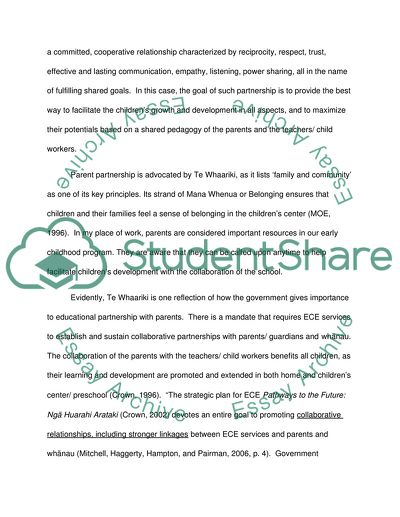Cite this document
(Forging Strong Alliances with Parents Essay Example | Topics and Well Written Essays - 1750 words - 1, n.d.)
Forging Strong Alliances with Parents Essay Example | Topics and Well Written Essays - 1750 words - 1. Retrieved from https://studentshare.org/education/1750396-draw-on-relevant-theories-the-quote-and-your-own-developing-pedagogy-to-discuss-and-debate-the-notion-of-partnership-with-parents-in-a-critical-mannerdetails-in-instructions-part-below
Forging Strong Alliances with Parents Essay Example | Topics and Well Written Essays - 1750 words - 1. Retrieved from https://studentshare.org/education/1750396-draw-on-relevant-theories-the-quote-and-your-own-developing-pedagogy-to-discuss-and-debate-the-notion-of-partnership-with-parents-in-a-critical-mannerdetails-in-instructions-part-below
(Forging Strong Alliances With Parents Essay Example | Topics and Well Written Essays - 1750 Words - 1)
Forging Strong Alliances With Parents Essay Example | Topics and Well Written Essays - 1750 Words - 1. https://studentshare.org/education/1750396-draw-on-relevant-theories-the-quote-and-your-own-developing-pedagogy-to-discuss-and-debate-the-notion-of-partnership-with-parents-in-a-critical-mannerdetails-in-instructions-part-below.
Forging Strong Alliances With Parents Essay Example | Topics and Well Written Essays - 1750 Words - 1. https://studentshare.org/education/1750396-draw-on-relevant-theories-the-quote-and-your-own-developing-pedagogy-to-discuss-and-debate-the-notion-of-partnership-with-parents-in-a-critical-mannerdetails-in-instructions-part-below.
“Forging Strong Alliances With Parents Essay Example | Topics and Well Written Essays - 1750 Words - 1”, n.d. https://studentshare.org/education/1750396-draw-on-relevant-theories-the-quote-and-your-own-developing-pedagogy-to-discuss-and-debate-the-notion-of-partnership-with-parents-in-a-critical-mannerdetails-in-instructions-part-below.


